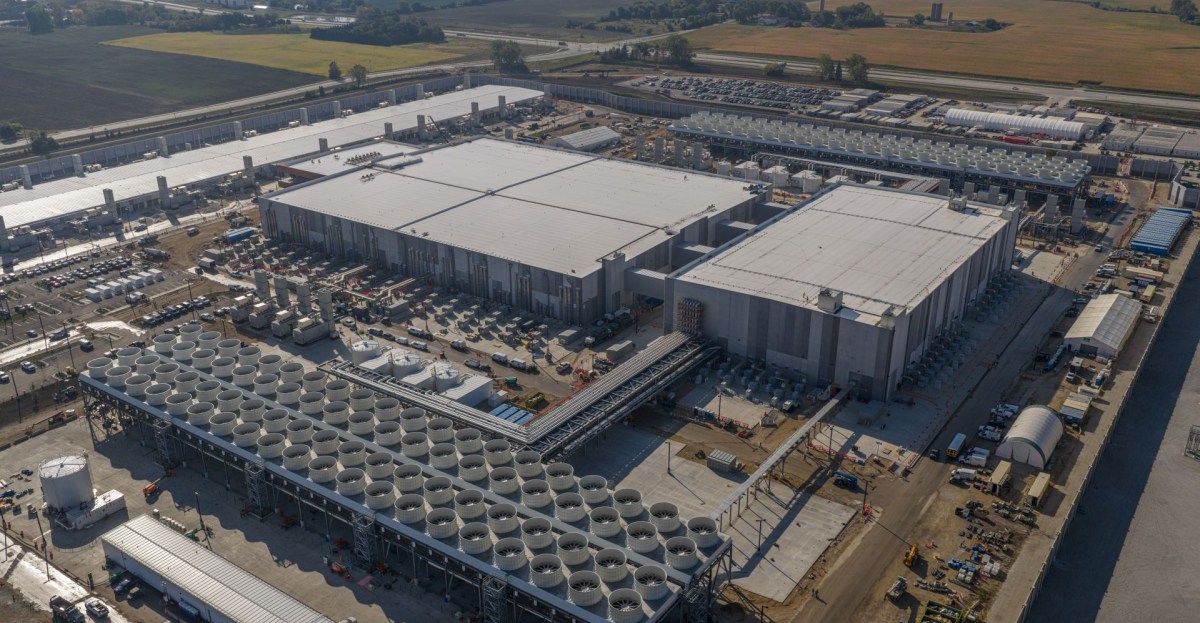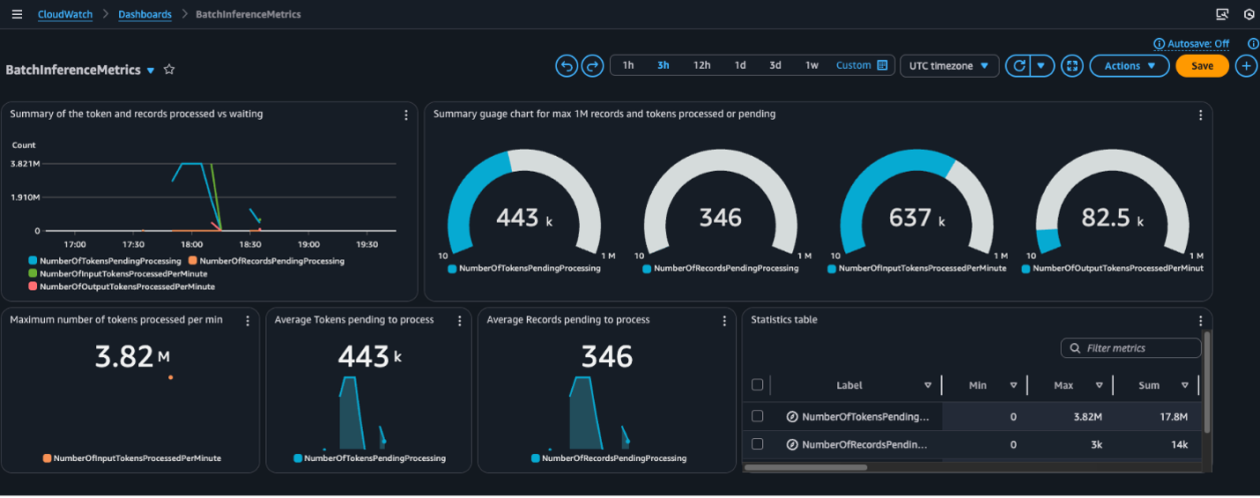
NVIDIA HGX B200 Reduces Embodied Carbon Emissions Intensity
Sources: https://developer.nvidia.com/blog/nvidia-hgx-b200-reduces-embodied-carbon-emissions-intensity, https://developer.nvidia.com/blog/nvidia-hgx-b200-reduces-embodied-carbon-emissions-intensity/, NVIDIA Dev Blog
TL;DR
- HGX B200 reduces embodied carbon intensity to 0.50 gCO2e per exaflop (FP16), a 24% improvement over HGX H100 (0.66 gCO2e/exaflop).
- AI inference is up to 15x more energy efficient on HGX B200, with up to a 93% reduction in energy for the same inference workload.
- Throughput: HGX B200 achieves 2.3x faster FP16 throughput than HGX H100.
- Hardware and memory: eight GPUs per platform; 180 GB of HBM3E memory per GPU; fifth-generation NVLink/NVSwitch up to 1.8 TB/s per-GPU and 14.4 TB/s aggregate bandwidth; second-generation Transformer Engine with FP4 alongside FP8.
- Downstream impact: for the DeepSeek-R1 model, HGX B200 is projected to deliver 10x inference efficiency, translating to a 90% reduction in operational carbon emissions for processing 1 million inference tokens. NVIDIA emphasizes that the PCF summaries rely on supplier data and are aligned with ISO standards, aiming to improve transparency and inform sustainable computing efforts. For more details, see the Product Carbon Footprint Summary for NVIDIA HGX B200. Source
Context and background
NVIDIA HGX B200 is an eight-GPU accelerated computing platform designed for high-performance computing (HPC) and supporting data analytics workloads. It builds on the HGX family with upgraded NVIDIA Blackwell B200 GPUs, configured to deliver dramatically improved AI performance while pursuing energy efficiency. Both HGX B200 and HGX H100 are interconnected via high-speed NVIDIA NVLink and NVIDIA NVSwitch, enabling scalable AI performance at large compute scales. The PCF summaries for these products are aligned with ISO 14040 and 14044 on life cycle assessments and reviewed per ISO 14067 on carbon footprints, reflecting NVIDIA’s commitment to transparent environmental reporting. These PCF summaries rely heavily on primary data from suppliers and integrate additional data from tools and databases such as imec.netzero, ecoinvent, and Sphera for modeling materials, transportation, and energy. NVIDIA also notes that downstream carbon intensity is further influenced by energy factors, including 2023 IEA emission factors, and that emissions data accounts for upstream emissions and transmission/distribution losses. To learn more, read the Product Carbon Footprint Summary for NVIDIA HGX B200. Source
What’s new
The HGX B200 introduces several key updates over its predecessor, the HGX H100:
- NVIDIA Blackwell B200 GPUs with 180 GB of HBM3E memory per GPU (more than double the memory of HGX H100).
- A second-generation Transformer Engine that supports FP4 alongside FP8, enabling higher throughput at lower precision.
- Fifth-generation NVLink/NVSwitch with up to 1.8 TB/s per-GPU and 14.4 TB/s aggregate bandwidth, enabling faster inter-GPU communication for large workloads.
- Throughput improvements: FP16 throughput is 2.3x faster than HGX H100.
- Energy efficiency gains for AI inference: up to 15x more energy efficient, equating to about a 93% reduction in energy for the same inference workload. In addition to hardware-level improvements, the PCF data indicates a reduction in the materials and components that contribute most to emissions—particularly in thermal components, ICs, and memory—helping lower the embodied emissions intensity per exaflop.
Why it matters (impact for developers/enterprises)
For developers and enterprises, HGX B200 offers a combination of higher compute throughput and lower environmental impact, both upstream and downstream. The 24% reduction in embodied carbon intensity per exaflop translates to lower manufacturing-related emissions for the same amount of compute, while the substantial gains in AI inference efficiency reduce energy use during deployment and operation. These improvements are especially meaningful for large workloads such as AI training and AI inference, where energy and emissions scale with compute activity. Looking ahead, NVIDIA projects clear downstream benefits. The DeepSeek-R1 model demonstrates a 10x improvement in inference efficiency with HGX B200, which translates into a 90% reduction in operational carbon emissions for processing 1 million inference tokens (100 TPS per user). These estimates are based on 2023 IEA emission factors and account for upstream emissions and transmission losses. As part of its broader sustainability efforts, NVIDIA emphasizes publishing additional reliable environmental data for its products and ongoing innovation toward sustainable computing and AI development. From a technical perspective, enterprises can expect improved data center economics due to reduced energy draw during inference and advances in memory capacity and interconnect bandwidth that support larger, more capable AI models at scale. The combination of higher performance and lower embodied emissions aligns with ISO-based reporting and industry best practices for life cycle assessment and carbon footprinting. For readers seeking the authoritative PCF context, the NVIDIA HGX B200 Product Carbon Footprint Summary provides the detailed data underpinning these claims. Source
Technical details or Implementation
The HGX B200 platform is built around eight GPUs per board and includes notable hardware and software enhancements designed to boost AI workloads while curbing emissions intensity. Key specifications and comparative context include: | Attribute | HGX H100 | HGX B200 |---|---|---| | GPUs per platform | 8 | 8 |Memory per GPU | not specified in source | 180 GB HBM3E |Interconnect | NVLink/NVSwitch (5th‑gen in context of the narrative) | Fifth‑generation NVLink/NVSwitch; up to 1.8 TB/s per‑GPU; 14.4 TB/s aggregate bandwidth |Transformer Engine | First generation (FP8/FP16 context implied) | Second generation with FP4 and FP8 |FP16 throughput vs H100 | baseline 1x | 2.3x faster |AI inference energy efficiency | baseline | Up to 15x more energy efficient (inference) |Embodied carbon intensity (gCO2e/exaflop, FP16) | 0.66 | 0.50 |Notable emissions-related observations | – | Material and component reductions in thermal parts, ICs, memory | The embodied carbon intensity figures are estimated based on FP16 precision and PCF data, reflecting a 24% decrease from HGX H100 to HGX B200. The 0.50 gCO2e per exaflop compares against 0.66 gCO2e per exaflop for HGX H100. The PCF summaries draw on primary supplier data for more than 90% of product weight and integrate models from imec.netzero, ecoinvent 3.10, and Sphera for materials, transportation and energy, all aligned with ISO standards. NVIDIA also notes that downstream carbon intensity improvements are particularly pronounced in active use and workloads.
Key takeaways
- HGX B200 delivers a substantial reduction in embodied carbon intensity (0.50 gCO2e/exaflop FP16) compared with HGX H100 (0.66 gCO2e/exaflop FP16).
- The platform shows a 2.3x improvement in FP16 throughput and up to 15x energy efficiency for AI inference.
- Memory and interconnect upgrades include 180 GB per-GPU HBM3E, 5th-generation NVLink/NVSwitch with high bandwidth (up to 1.8 TB/s per-GPU, 14.4 TB/s total).
- The second-generation Transformer Engine supports FP4 and FP8, enabling higher precision throughput.
- Projected downstream gains, such as 10x inference efficiency for the DeepSeek-R1 model and 90% reductions in operational emissions for 1M inferences, underscore the practical environmental benefits for deployment.
FAQ
-
What is the NVIDIA HGX B200?
n eight-GPU accelerated computing platform designed for HPC and data analytics workloads, featuring NVIDIA Blackwell B200 GPUs and high-speed interconnects (NVLink/NVSwitch).
-
How does HGX B200 compare to HGX H100 in carbon intensity?
Embodied carbon intensity is reduced from 0.66 gCO2e per exaflop (HGX H100) to 0.50 gCO2e per exaflop (HGX B200), a 24% improvement (FP16). [Source](https://developer.nvidia.com/blog/nvidia-hgx-b200-reduces-embodied-carbon-emissions-intensity/)
-
What are the hardware enhancements in HGX B200?
180 GB per-GPU HBM3E memory, fifth-generation NVLink/NVSwitch with up to 1.8 TB/s per-GPU and 14.4 TB/s aggregate bandwidth, and a second-generation Transformer Engine supporting FP4 and FP8. Throughput is 2.3x FP16 versus HGX H100, with inference energy efficiency up to 15x higher.
-
What is the practical impact for inference workloads?
Inference energy efficiency can be up to 15x higher, and for the DeepSeek-R1 model, HGX B200 is projected to deliver 10x inference efficiency, translating to about a 90% reduction in operational carbon emissions for processing 1 million inference tokens.
References
- https://developer.nvidia.com/blog/nvidia-hgx-b200-reduces-embodied-carbon-emissions-intensity/
- NVIDIA Product Carbon Footprint Summary for NVIDIA HGX B200 (provided link above)
More news
Predict Extreme Weather in Minutes Without a Supercomputer: Huge Ensembles (HENS)
NVIDIA and Berkeley Lab unveil Huge Ensembles (HENS), an open-source AI tool that forecasts low-likelihood, high-impact weather events using 27,000 years of data, with ready-to-run options.
Scaleway Joins Hugging Face Inference Providers for Serverless, Low-Latency Inference
Scaleway is now a supported Inference Provider on the Hugging Face Hub, enabling serverless inference directly on model pages with JS and Python SDKs. Access popular open-weight models and enjoy scalable, low-latency AI workflows.
How to Reduce KV Cache Bottlenecks with NVIDIA Dynamo
NVIDIA Dynamo offloads KV Cache from GPU memory to cost-efficient storage, enabling longer context windows, higher concurrency, and lower inference costs for large-scale LLMs and generative AI workloads.
Kaggle Grandmasters Playbook: 7 Battle-Tested Techniques for Tabular Data Modeling
A detailed look at seven battle-tested techniques used by Kaggle Grandmasters to solve large tabular datasets fast with GPU acceleration, from diversified baselines to advanced ensembling and pseudo-labeling.
Microsoft to turn Foxconn site into Fairwater AI data center, touted as world's most powerful
Microsoft unveils plans for a 1.2 million-square-foot Fairwater AI data center in Wisconsin, housing hundreds of thousands of Nvidia GB200 GPUs. The project promises unprecedented AI training power with a closed-loop cooling system and a cost of $3.3 billion.
Monitor Amazon Bedrock batch inference using Amazon CloudWatch metrics
Learn how to monitor and optimize Amazon Bedrock batch inference jobs with CloudWatch metrics, alarms, and dashboards to improve performance, cost efficiency, and operational oversight.





